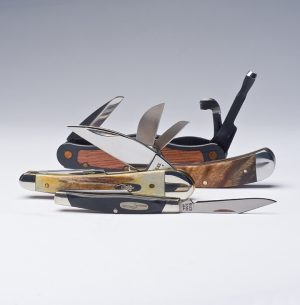 What to look for when selecting a folding knife
What to look for when selecting a folding knife
By Bob Duncan
One of the neat things about whittling is that you can do it anywhere. This means your knife should be portable, and nothing beats the convenience of safely slipping a folded knife into your pocket. Many manufacturers create folding knives with blades that resemble classic carving knives. These specialty knives can get expensive. They are worth the money if you do a lot of whittling, but you don’t need to buy a specialty knife to whittle. Many carvers use a second pocketknife for everyday use, such as opening cardboard boxes, to avoid dulling the sharp pocketknife they use for whittling. When selecting a pocketknife for whittling, keep these factors in mind.
Carbon Steel Blade
Many pocketknife blades are made from stainless steel. Stainless steel holds an edge for a long time and doesn’t corrode if you close the knife with a wet blade—both great qualities for pocketknives. But because stainless steel dulls slowly, it sharpens slowly as well. Most carving tools are made from high-carbon steel. Knives with high carbon steel blades are more expensive than knives with stainless steel blades, but they are easier to sharpen. Many manufacturers are creating high-carbon stainless steel blades, which combine the durability of stainless steel with the added benefits of carbon steel.
Blade Location
Some pocketknives have 10 to 20 blades. These knives are generally less comfortable to use for long periods of time, and the blades you want to carve with are seldom in the center of the handle. If the knife blade is not in the center of the handle, you lose leverage, which reduces your carving power and control. Instead, look for a knife with two or, at most, three blades, which should ensure the blades are conveniently placed.
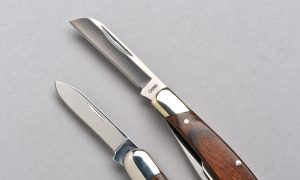
A sheepsfoot blade (top) is better suited for whittling than a drop-point blade (bottom).
Blade Shape
Look for a sheepsfoot blade—one where the tip of the knife is closely aligned with the main cutting edge, similar to a utility knife or standard bench knife. Many pocketknife blades have a drop-point shape, which centers the tip of the knife in the middle of the blade. The drop-point shape works well for general cutting purposes, but makes it difficult to carve small details. You can reshape a blade using sharpening stones and sandpaper, but the process is time consuming.
Locking Blades
A locking blade keeps the sharp knife from accidentally closing on your fingers, which is a good safety feature. However, as long as you are always aware that a knife could close on your fingers, you should be safe, regardless of whether or not your knife has a locking blade.
Choosing the Right Knife for You
Selecting the ideal pocketknife is a matter of personal preference. The size of your grip compared with the size of the handle will greatly influence how comfortable the knife is to use over extended periods. The ideal knife for your friend may not be well-suited for you. Ask other whittlers for their opinions, but then hold and test several knives before making a purchase.
Top Knife Choices
To find the right knife, you need to decide what you want to carve with it and then go out and try several. These are a few of our favorites—one of them might be your perfect knife, too.
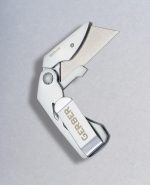 |
Gerber E.A.B Lite ($14): This inexpensive folding knife uses standard utility knife blades. But, unlike many folding utility knives, the blade is fixed in position and does not retract, making this knife much safer to use. The blades are long lasting, but could use a stropping before carving. Available from Gerber, 800-950-6161, www.gerbergear.com. |
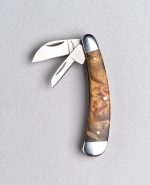 |
Woodcraft Two-Blade Folding Carving Knife ($21): Comes with two high-carbon stainless steel blades—a detail blade and chip carving blade—in a comfortable handle. The small detail blade fits into tight areas, but neither blade is large enough to carve large projects, and neither locks. Available from Woodcraft, 800-225-1153, www.woodcraft.com. |
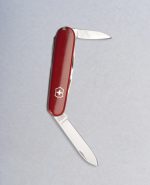 |
Victorinox Swiss Army Tinker ($29): Features two stainless-steel drop-point blades: large for roughing out and smaller for details. Other tools are included but not used, and for carving comfort, you must remove the key ring. Find a local dealer by contacting Victorinox Swiss Army, www.swissarmy.com, 800-422-2706. |
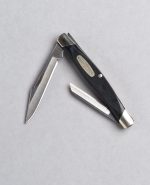 |
Buck Lancer ($36): Small high-carbon steel knife features two nonlocking blades: a large blade for fast stock removal and a sheepsfoot blade for general carving. Made in the USA. Find a local dealer by contacting Buck Knives, www.buckknives.com, 800-326-2825. |
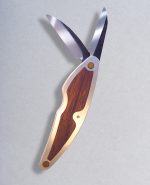 |
Flexcut Whittling Jack ($51): Has a detail blade and a roughing out blade made from tempered spring steel, which holds an edge and sharpens easily. Slightly larger than a standard pocketknife. For $40, the Detail Jack has just the detail blade. The blades do not lock on either knife. Made in the USA and available from Flexcut, 800-524-9077, www.flexcut.com |
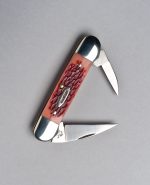 |
Oar Carver Version II ($70): Features two high-carbon steel blades: a large one for roughing out and a detail blade for fine detail. The blades do not lock. For $65, the Oar Carver Single Locker has just the large blade, and it locks in place. Made in the USA and available from Stadtlander Woodcarving, 585-593-6911, www. stadtlandercarving.com. |
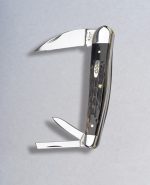 |
Case Seahorse Whittler ($85): Case Cutlery has brought their three-blade whittling knife back due to popular demand. The small point on the large blade allows you to use one blade for roughing out and some details. The smaller sheepsfoot blade and smaller drop-point blade let you carve all sorts of details. This knife is available from W.R. Case and Sons, 800-523-6350, www.wrcase.com. |
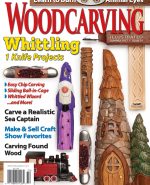 CLICK HERE to see more great projects from Woodcarving Illustrated Summer 2017 (Issue 79). CLICK HERE to purchase the issue.
CLICK HERE to see more great projects from Woodcarving Illustrated Summer 2017 (Issue 79). CLICK HERE to purchase the issue.







